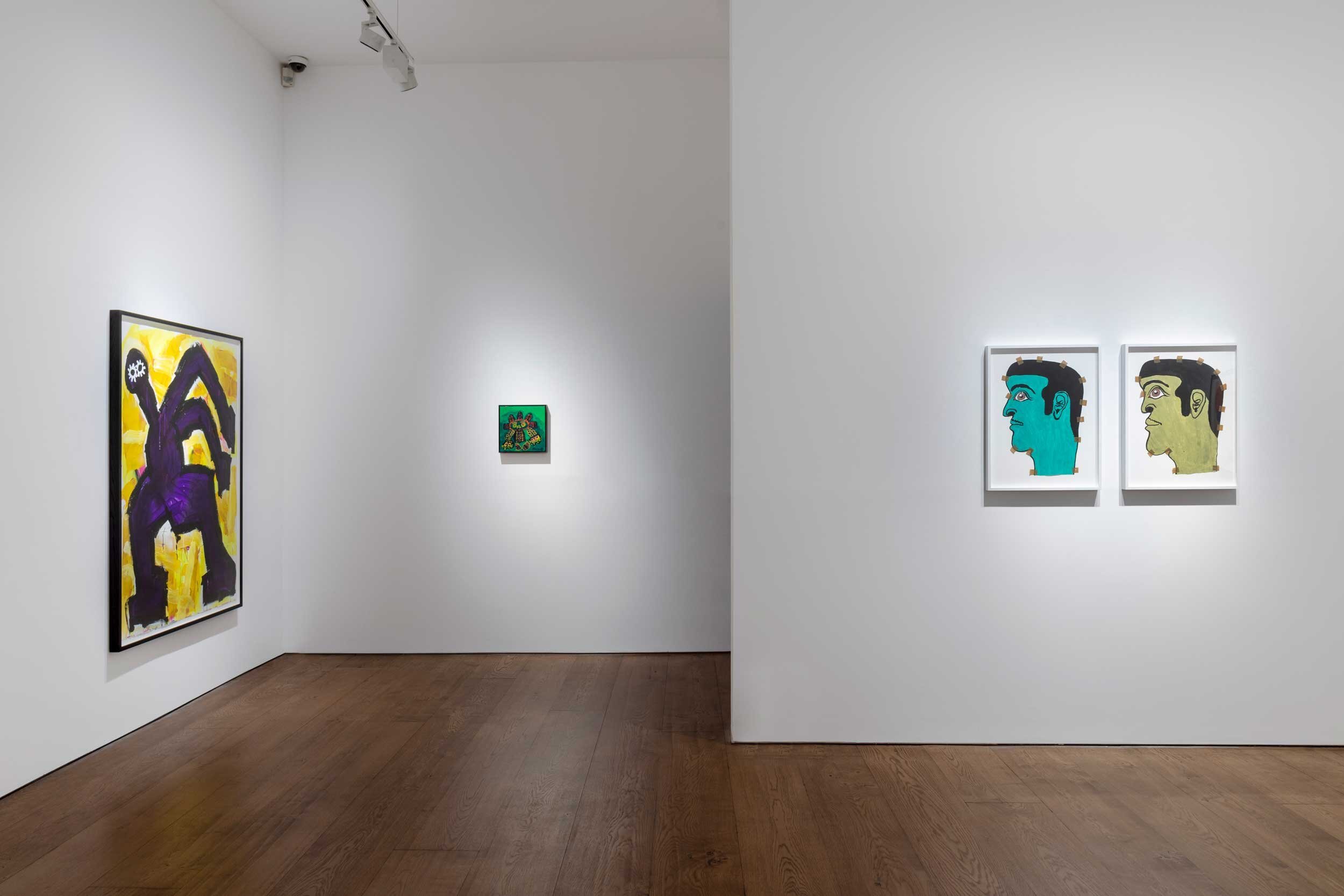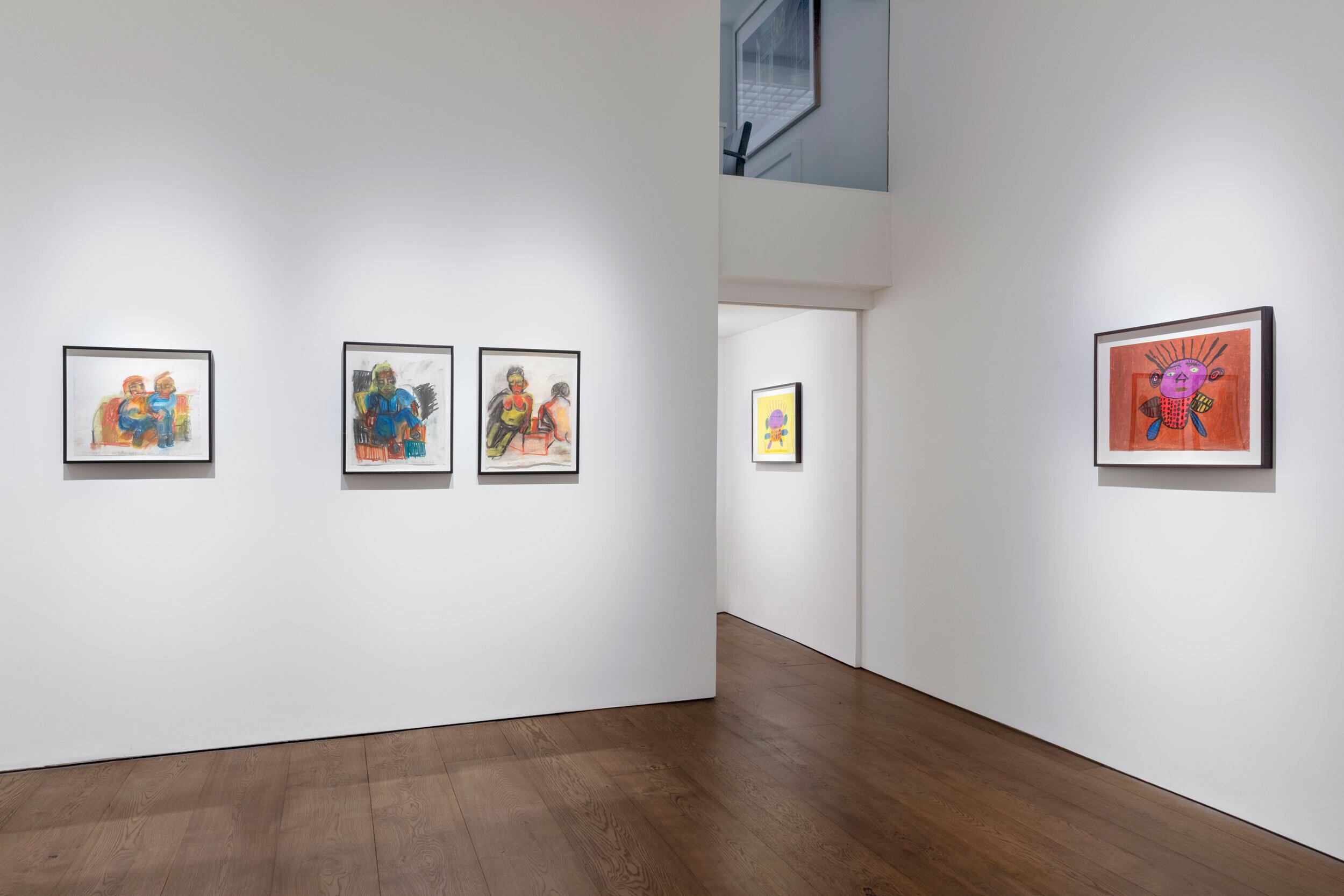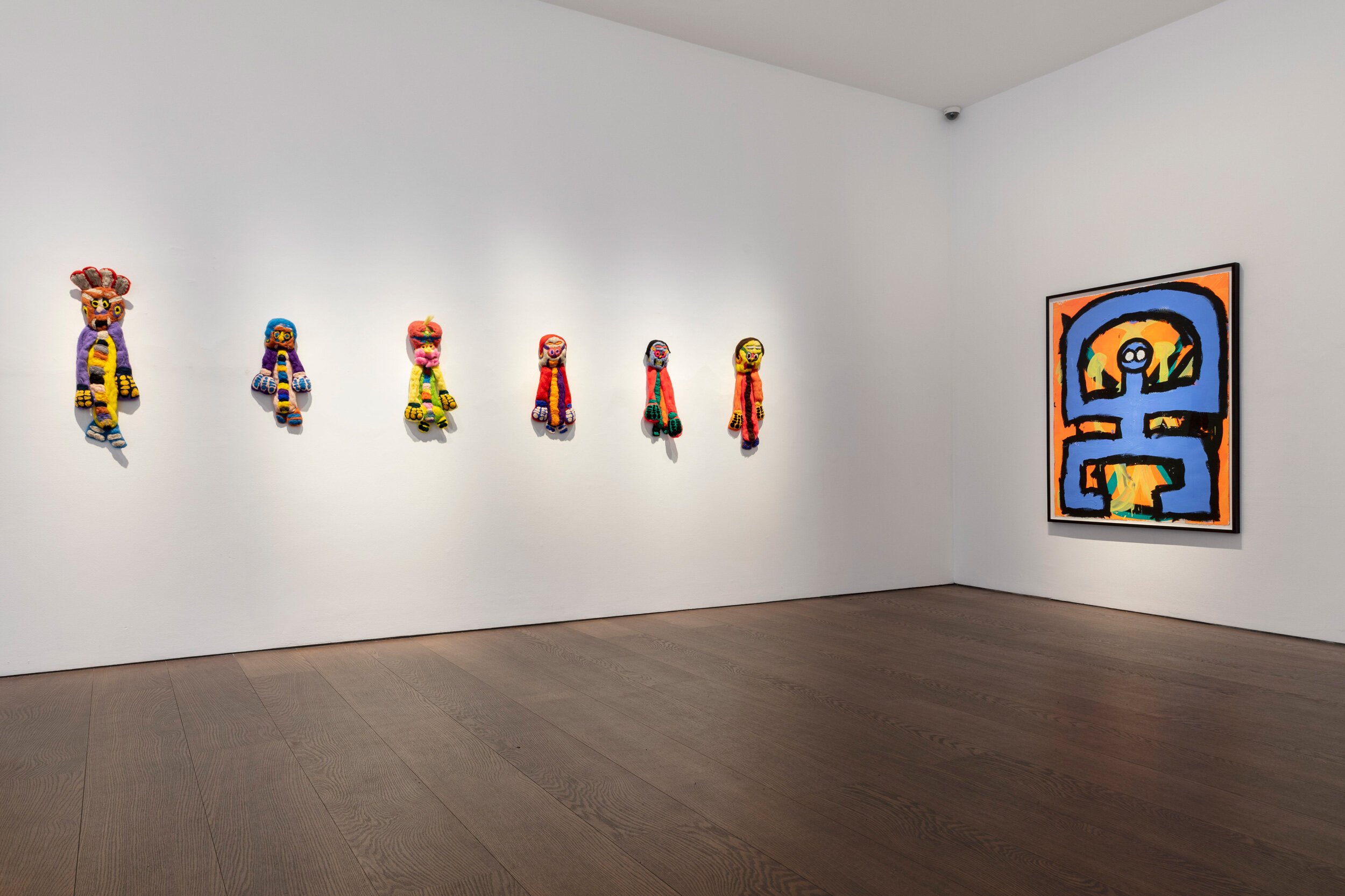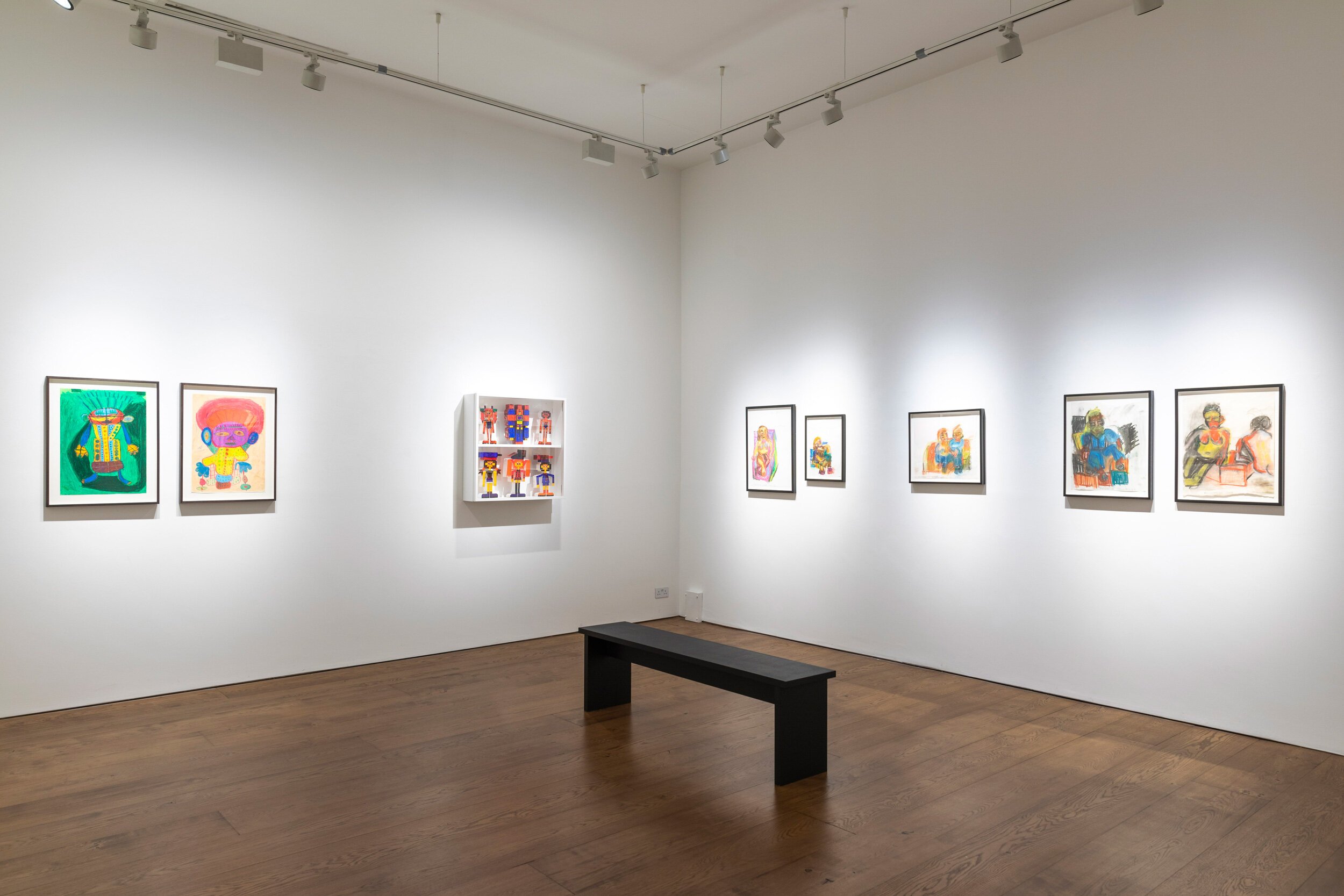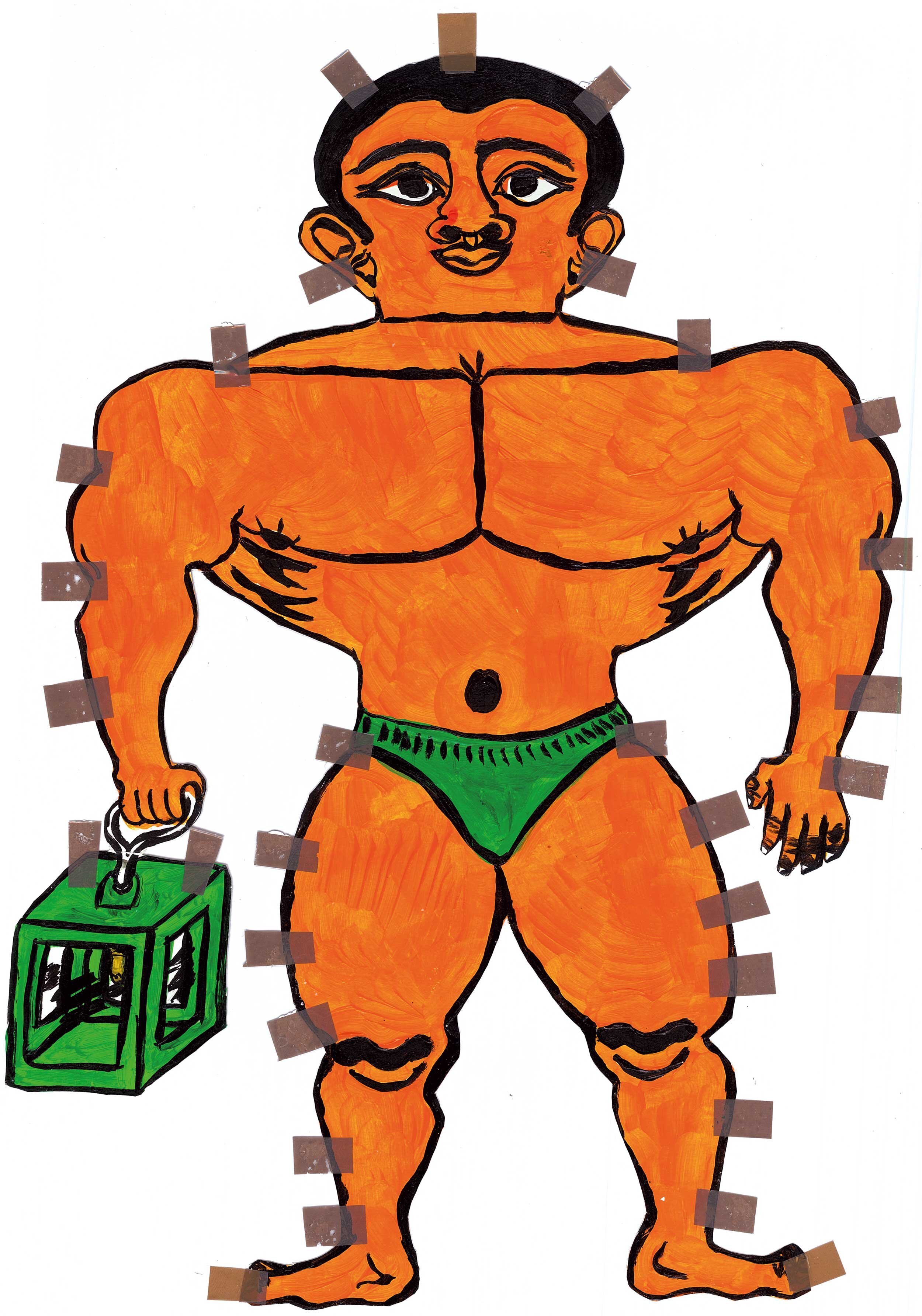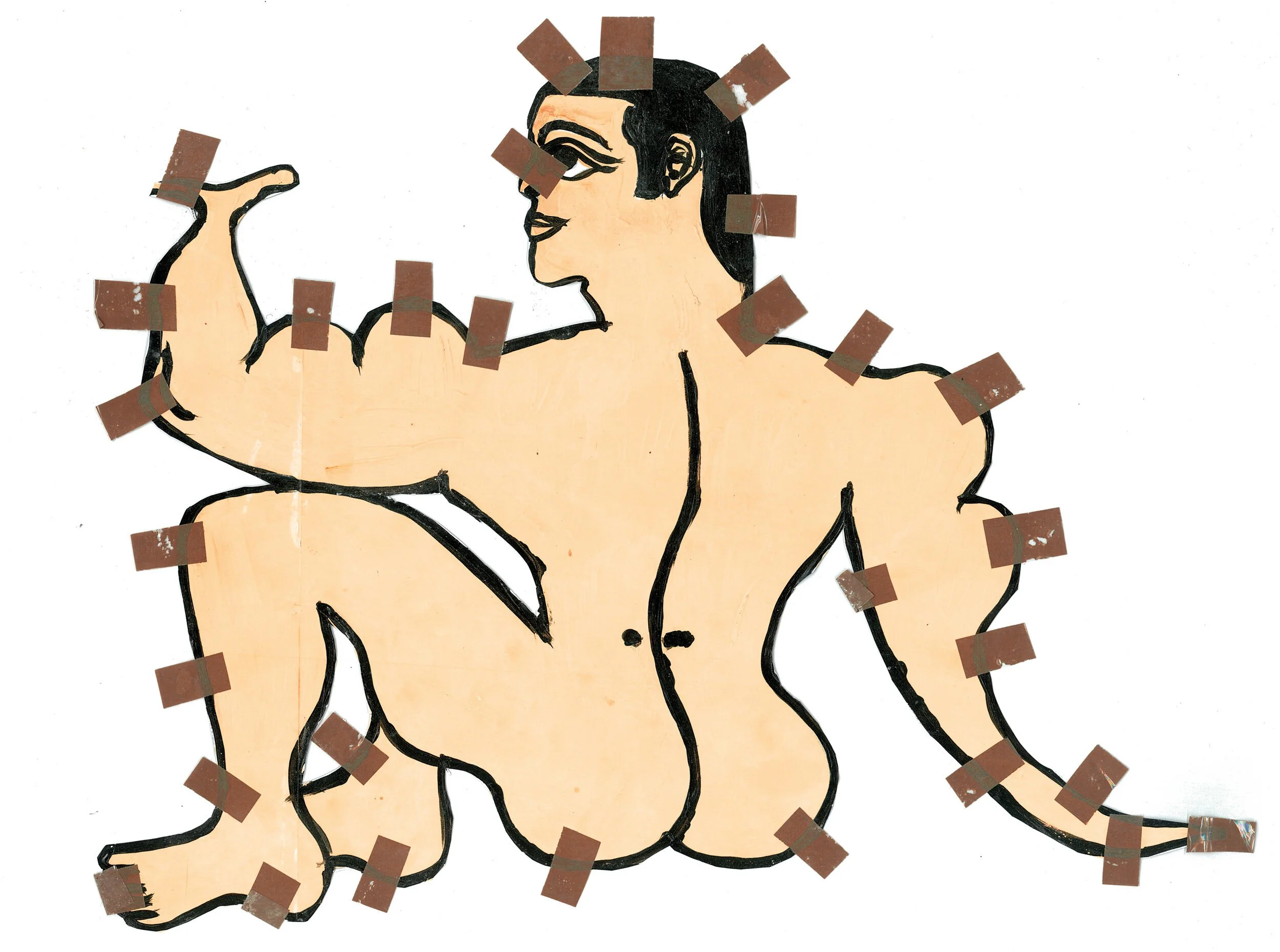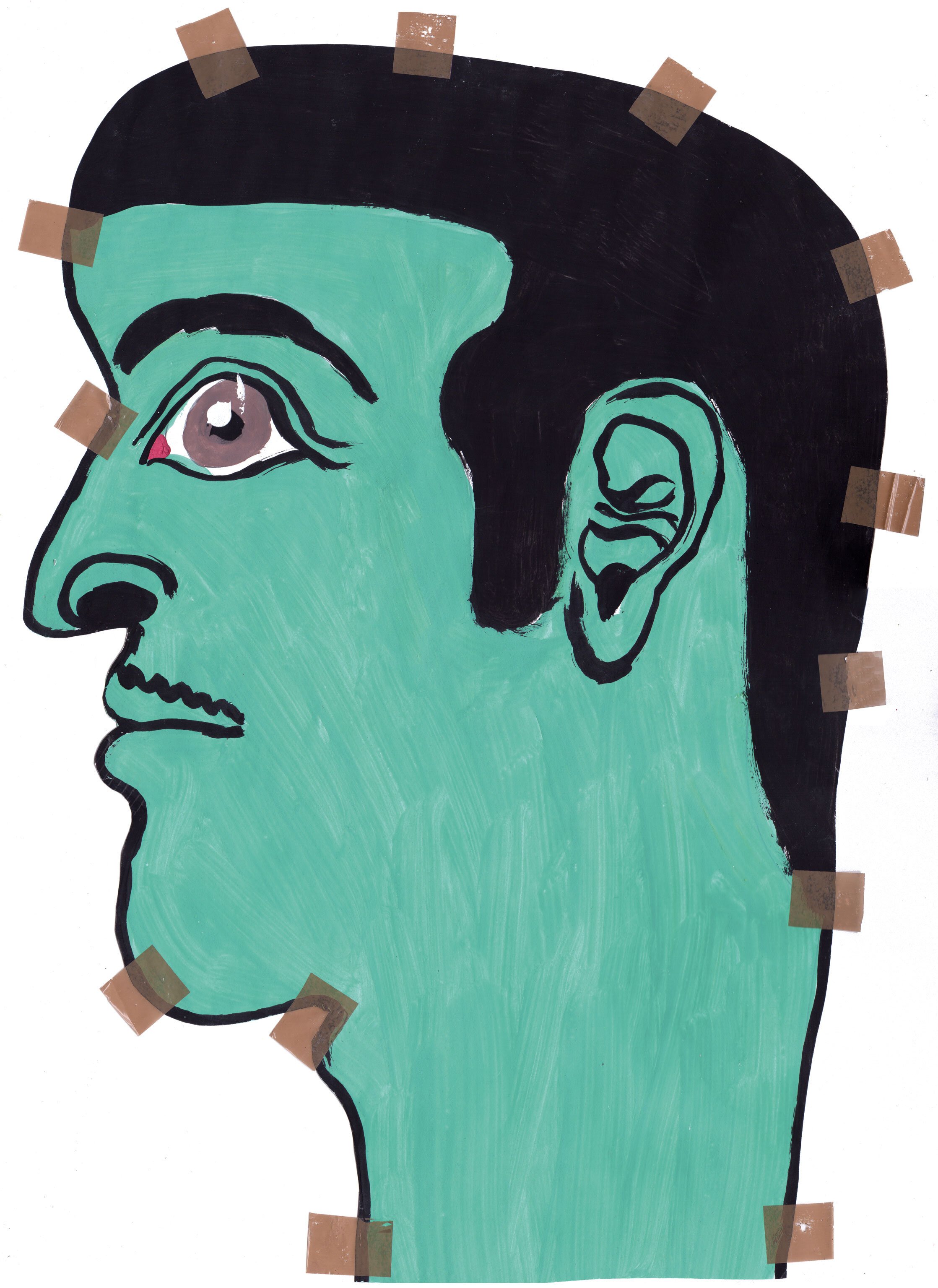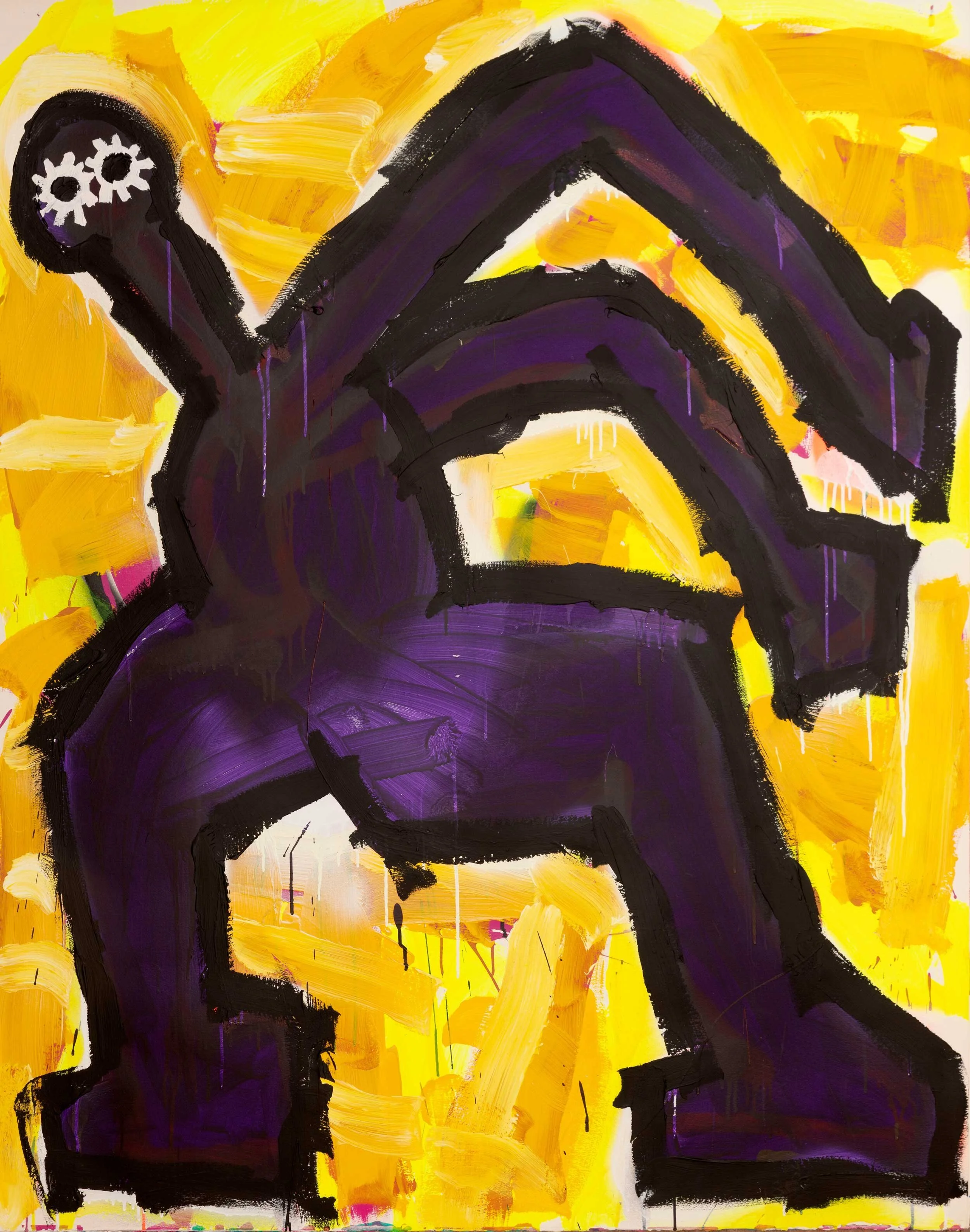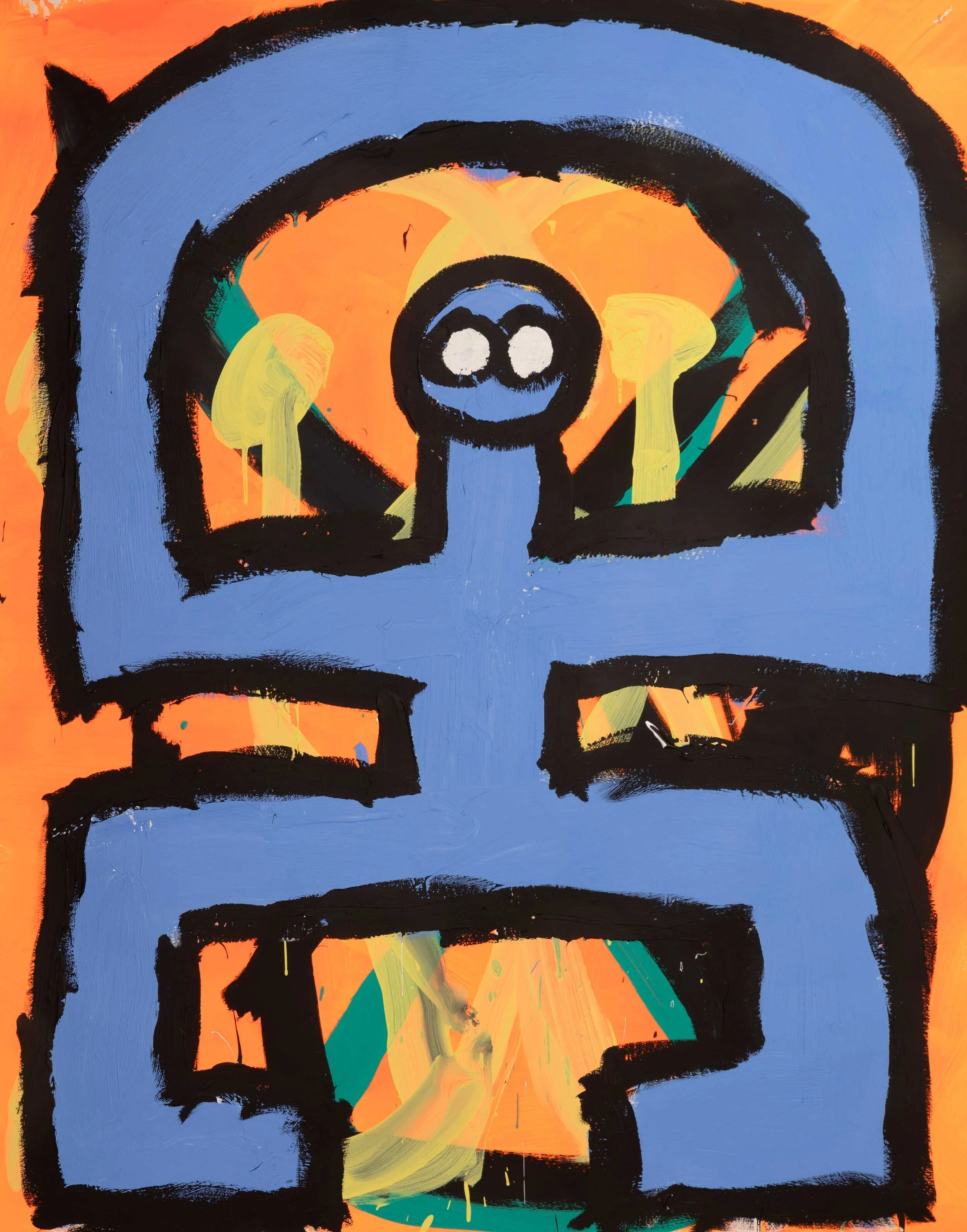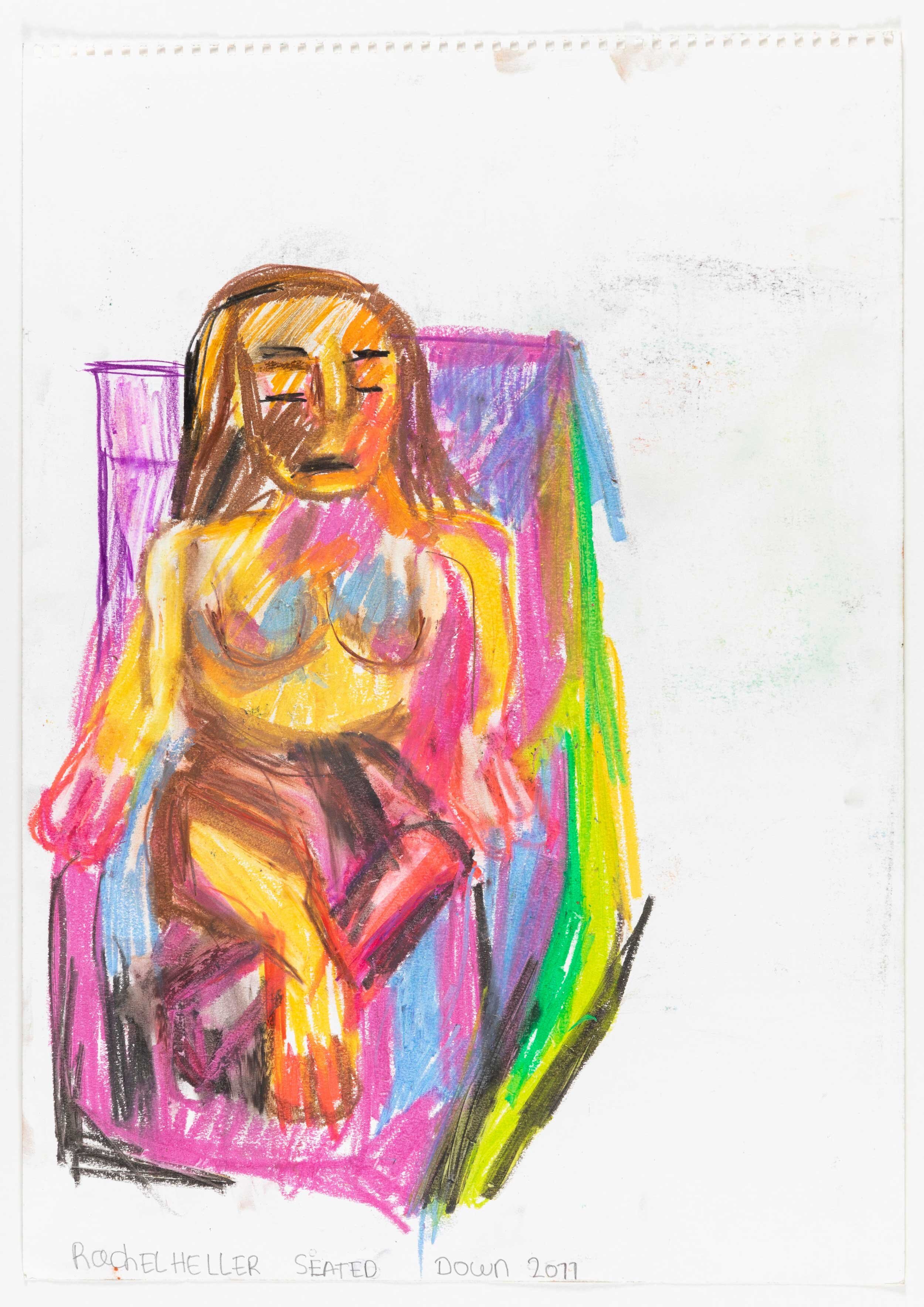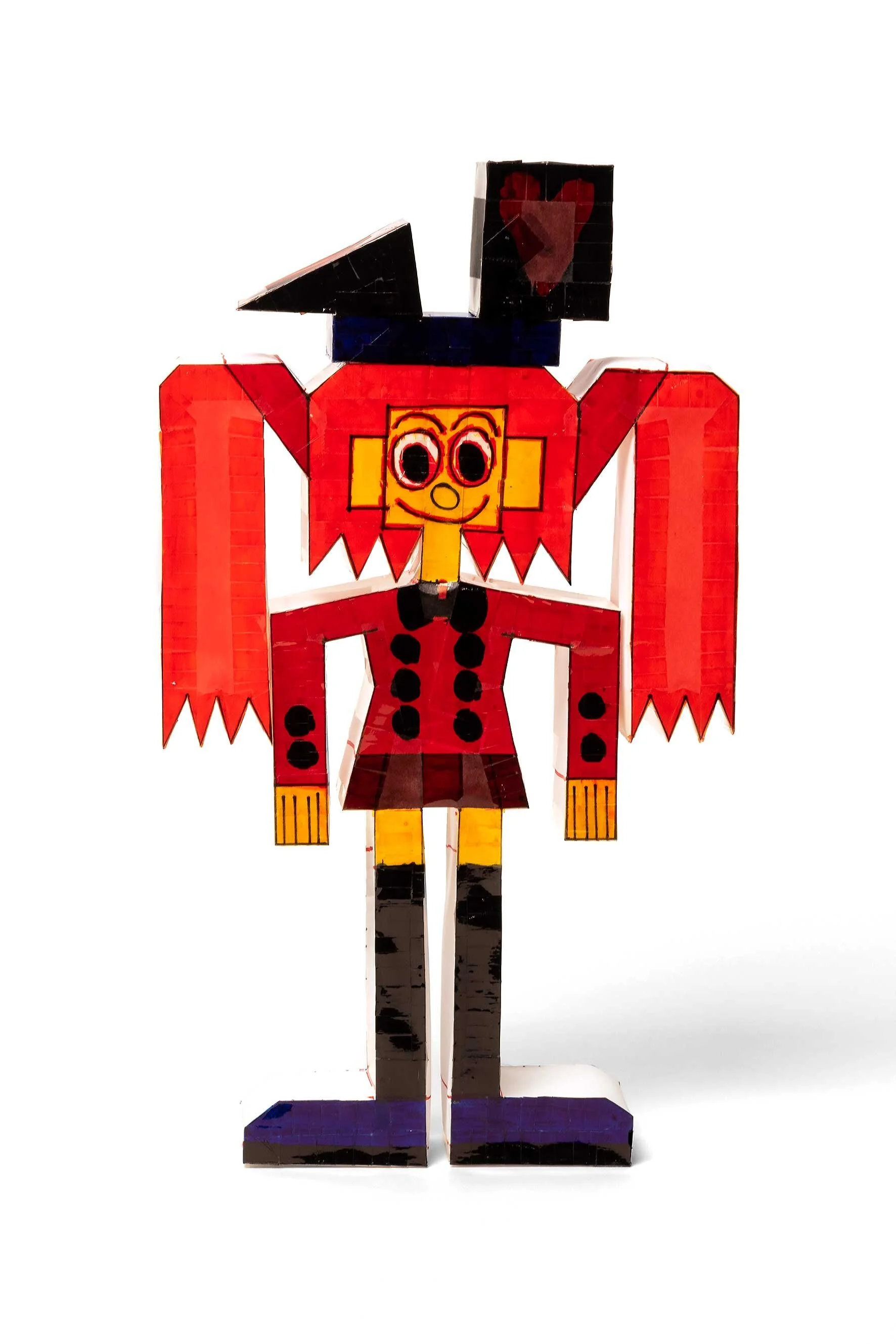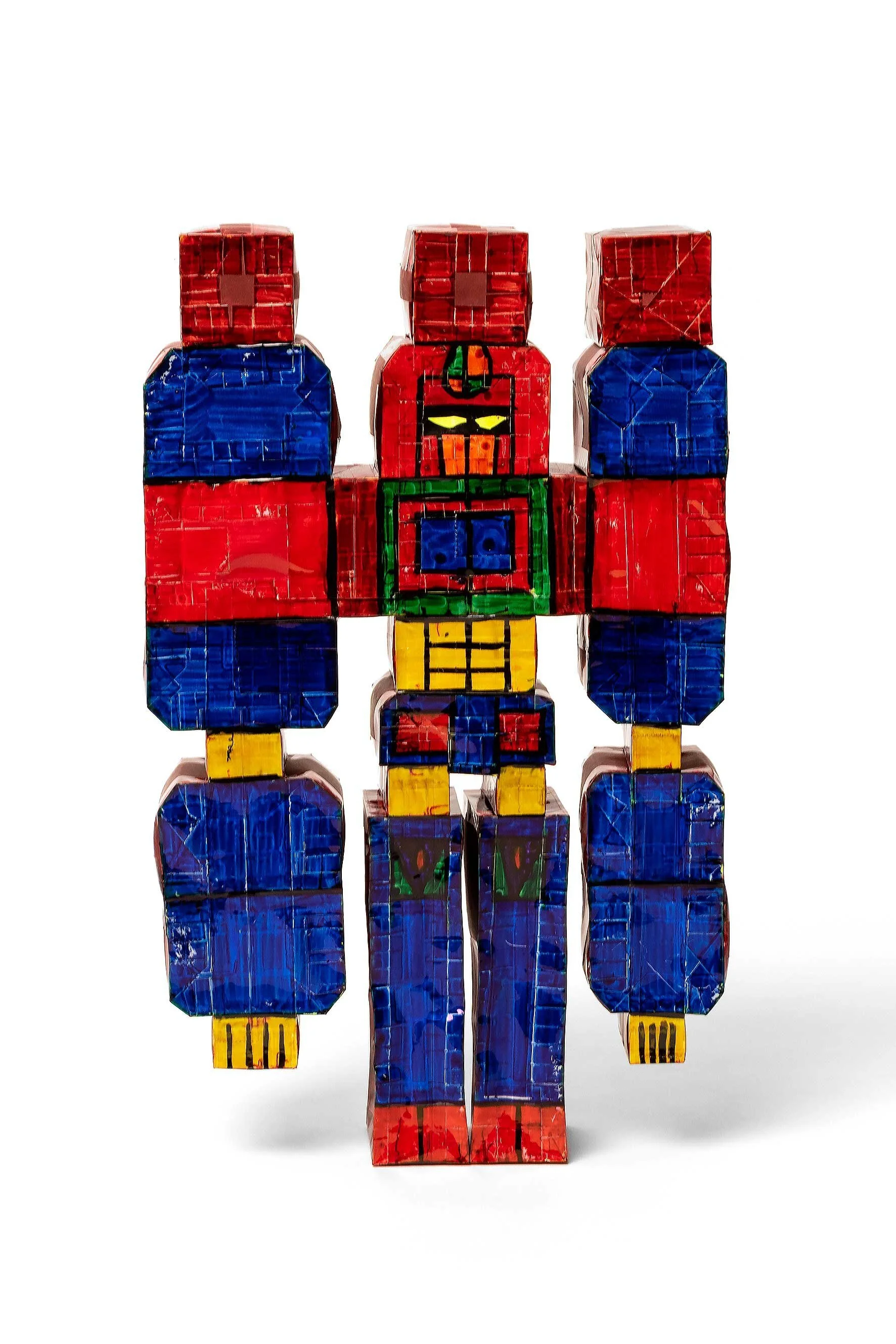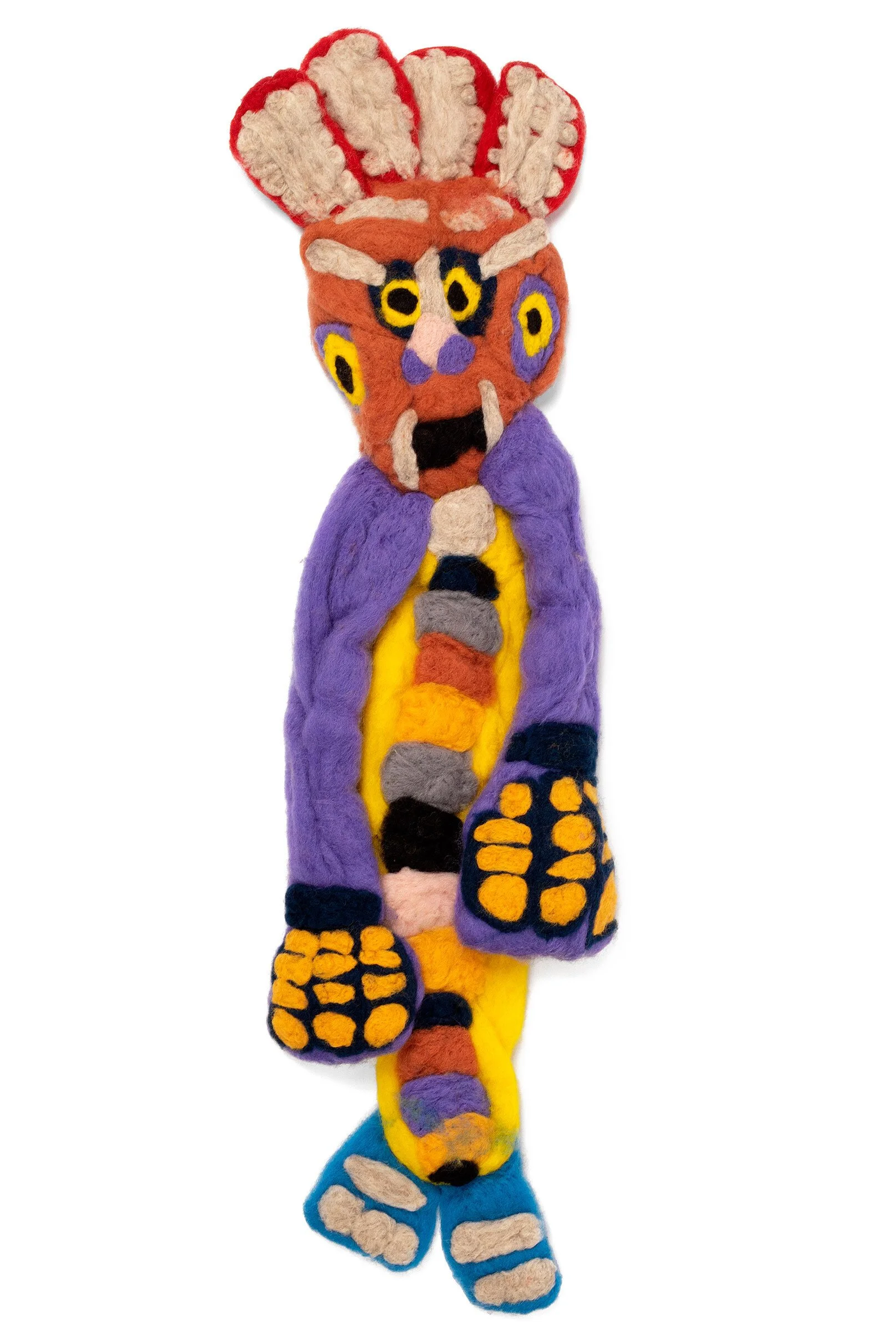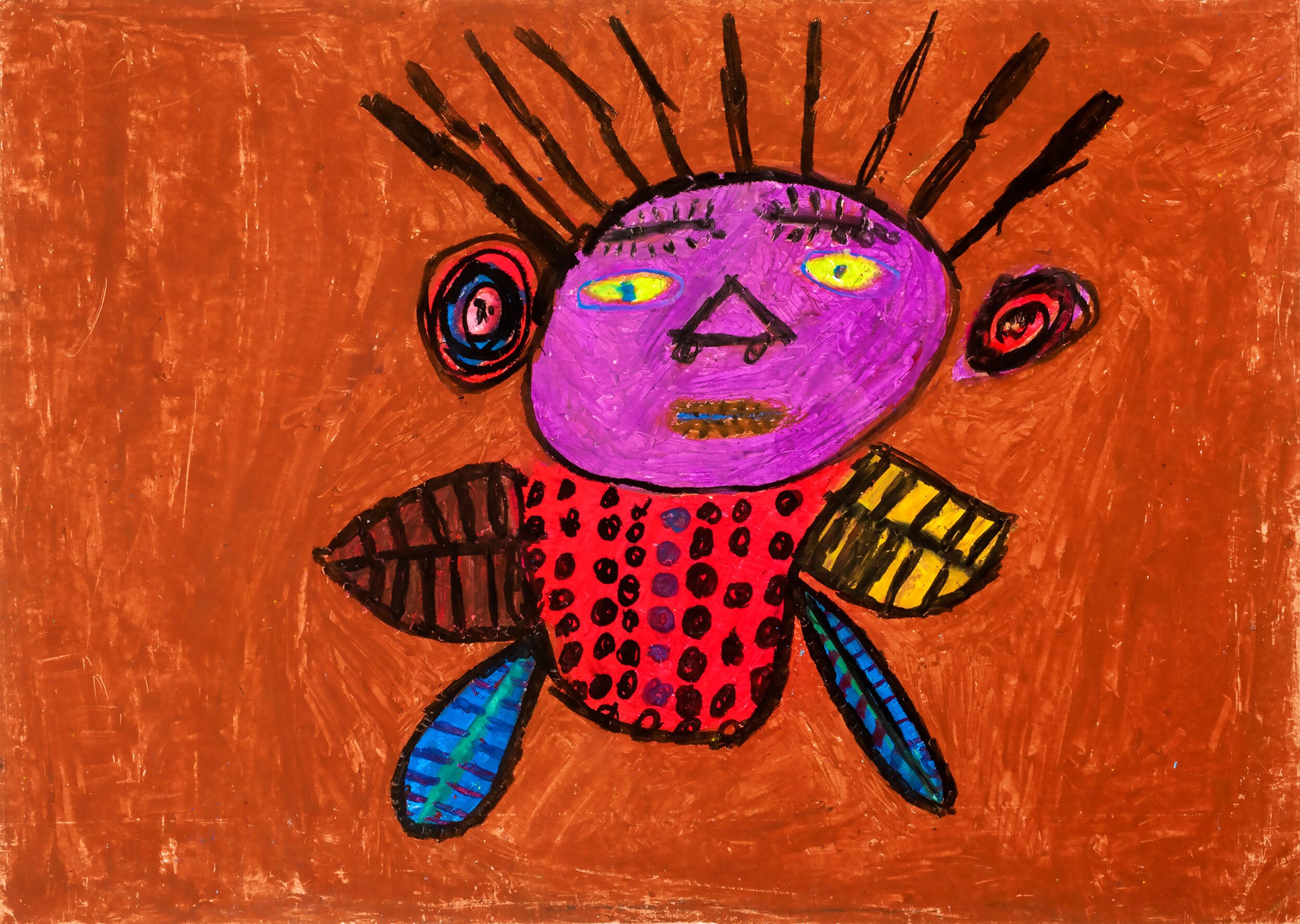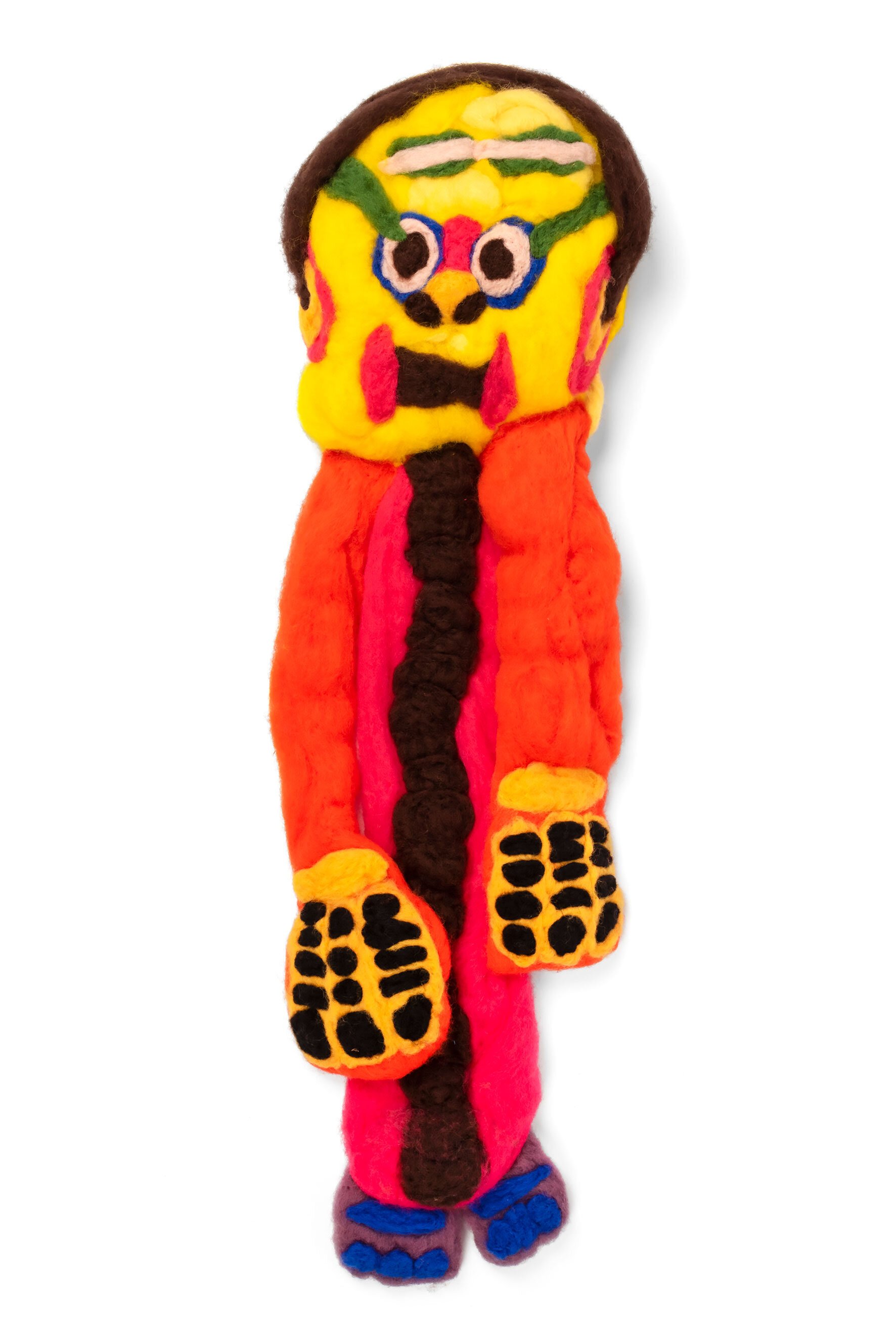prismatic minds
21 JULY - 28 AUGUST 2021
FLOWERS GALLERY, LONDON
CURATED BY JENNIFER GILBERT & RUSSELL TOVEY
OVERVIEW
Address: 21 Cork Street, London, W1S 3LZ
Opening Hours: Tuesday – Saturday, 11am – 6pm
Access: There is ramped access to the ground floor, and a TV screen inside with a walkthrough of the lower ground floor space that is only accessible via stairs. Large print texts are available.
Flowers Gallery is pleased to announce Prismatic Minds, an exhibition looking at highly stylized visual languages featuring repeated figures and characters, curated by Jennifer Gilbert (Director of the Jennifer Lauren Gallery) and actor, writer, and co-presenter of art podcast Talk Art Russell Tovey.
Bringing together six mainly self-taught international artists, each with intensely personal and imaginative styles, Prismatic Minds presents a new discussion on the act of repetition and the desire to surround oneself with others, real or imagined. Original, raw and energetic, the works on view introduce a carnival of contemporary characters through repeated imagery that has reappeared in the artists’ work over many years. The exhibition questions the boundaries of the figure, exploring the deep-rooted personal compulsion to build a cast of characters through ideas of solidarity, family and companionship. Often theatrical or performative, and created without expectations from others, the paintings, drawings and sculptures of Prismatic Minds demonstrate practices of masterful storytelling and image-making.
The six artists are: Misleidys Francisca Castillo Pedroso, Makoto Okawa, Keisuke Ishino, Susan Te Kahurangi King, Edward Dutkiewicz and Rachel Heller.
With thanks to BMW Group Culture and BMW UK, proudly supporting the arts for over 50 years.
ARTISTS
MISLEIDYS FRANCISCA CASTILLO PEDROSO
Self-taught Cuban artist Misleidys Francisca Castillo Pedroso (b.1985) creates larger-than-life cut out characters, often bodybuilders, with powerful, muscular physiques. Made using construction paper, their features are delineated with striking black outlines, and their outside edges are characteristically fringed with evenly spaced brown tape used by the artist to fix them to the walls of her home. Ranging from several inches to eight feet tall, Pedroso’s archetypal repeated figures appear to represent male, female and non-binary characters, differentiated by variations of colour and individual style.
Pedroso was born with a severe hearing impairment and does not speak. Living in relative isolation, it is said that the artist has built her voice, personal expression and sociality through her artwork, and those close to her claim that Pedroso can be seen in ‘conversation’ with her works using hand gestures. She has exhibited internationally, is represented by Christian Berst Art Brut Paris and this is the first time her work has been exhibited in the U.K.
EDWARD DUTKIEWICZ
British artist Edward Dutkiewicz (1961-2007) is known for his exuberant use of colour and energetic compositions, which can be seen in the largescale works on paper in this exhibition. Dutkiewicz spoke of “possessing” his subjects, often recording his own varying moods in painted self-portraits. A self-taught artist, Dutkiewicz lived and worked in the East End of London.
Born in Tamworth, Staffordshire, he was the son of Polish immigrants who came to Britain during the Second World War. Despite being diagnosed with multiple sclerosis at the age of 21, he continued to pursue his artistic career and had his first London exhibition at Flowers Gallery in Hackney. He exhibited internationally, in Paris, Cologne, Stockholm and San Francisco, and undertook several notable commissions to create large-scale sculptures for the Chelsea and Westminster Hospital, the Estorick Collection, and wall paintings and murals for the borough of Tower Hamlets.
RACHEL HELLER
Characterised by an energetic and assured use of line and kaleidoscopic palette, British artist Rachel Heller’s (b.1973) inventive style conveys the innocence and honesty of her characters within a sincere and natural expression. Artist Maggi Hambling CBE has said of Heller’s work that it “reveals human truth in an eye-opening way.”
Rachel Heller was born with Down’s syndrome and, from an early age, she found creating art to be a compelling means of self expression. Her work has been championed by leading British contemporary artists including Peter Blake. In contrast to the other self-taught artists in this show, Heller studied at The Prince’s Drawing School in Hoxton and has attended summer schools at Slade School of Art, as well as completing a foundation course and diploma at Byam Shaw. She has exhibited in solo exhibitions at Flowers Gallery and group exhibitions including the Royal Academy Summer Exhibition, London.
KEISUKE ISHINO
Inspired by anime cartoons, self-taught Japanese artist Keisuke Ishino’s (b.1987) bright, bold origami figures combine the influences of Japanese popular culture and traditional craft. Ishino’s figurines represent a key focus of his prolific output, completing as many as 300 a year. Constructed from two-dimensional drawings made with colourful markers, their transformation into three-dimensional forms suggests a powerful physical presence.
Ishino has created his paper figures since childhood. Recently, he moved to an institution with a studio for disabled artists in Japan and has started to create drawings and three-dimensional artworks featuring numbers and Chinese lettering. Ishino’s work has appeared in many exhibitions of Japanese Outsider Art across Japan and throughout Europe. In the UK, his work featured in the exhibition Souzou at the Wellcome Collection in 2013.
SUSAN TE KAHURANGI KING
New Zealand artist Susan Te Kahurangi King (b.1951) shares much of her world through her drawings. The works in this exhibition, dated around 1965-67, feature complex compositions, almost encyclopedic in content. An abundance of human figures, rich in facial expressions, gesture and costume, emerge, interplay or escape from their fellow paper dwellers.
King is a self-taught artist who has been drawing prolifically since her childhood in the mid-1950s. She stopped speaking entirely at a young age and cannot read or write. In the absence of being able to verbally communicate directly with others, she expresses her thoughts, feelings, understandings, observations, fears and fascinations through her skilful and innovative drawings. King’s work has been presented in solo exhibitions at galleries and in two solo museum exhibitions at the ICA Miami and at Intuit: The Center for Intuitive and Outsider Art in Chicago. King has works in a number of international collections.
MAKOTO OKAWA
Japanese artist Makoto Okawa’s (1976-2016) vibrant felted figures suggest the full spectrum of human emotions, often with a mischievous humour. The felted dolls, which Okawa made over the course of a decade, are known as ‘Makoots’, with forms ranging from the human figure to symbolic creatures such as worms and octopuses.
Okawa was a prolific self-taught artist who also created vibrant, expressive paintings of the dolls. He developed his felting technique at Atelier Corners, an art studio in Japan supporting disabled artists, which he attended from 2005. Okawa’s work has appeared in several exhibitions around the world, including the touring exhibition Nama Ato: Japanese Outsider Art in 2016-17. His work is represented in a number of collections including the abcd collection in Paris.
RESOURCES
BSL VIDEOS
Deaf artist Rebecca Vaughan explains in BSL the six artists in the ‘Prismatic Minds’
Deaf artist Rebecca Vaughan explains in BSL the ‘Prismatic Minds’ exhibition
INTERVIEWS
JENNIFER AND RUSSELL CHATTING ABOUT THE SHOW WITH VIEWS OF THE INSTALLATION AT FLOWERS GALLERY
JENNIFER IN CONVERSATION WITH MIZUE KOBAYASHI ABOUT JAPANESE ARTIST KEISUKE ISHINO WITH TRANSLATIONS FROM ERIC ELLEFSEN (APOLOGIES FOR BACKGROUND NOISE TOWARDS THE END)
JENNIFER AND RUSSELL CHATTING TO PETITA COLE IN NEW ZEALAND – SISTER OF SUSAN TE KAHURANGI KING.
JENNIFER AND RUSSELL IN CONVERSATION WITH CHRISTIAN BERST – A GALLERIST WHO REPRESENTS MISLEIDYS FRANCISCA CASTILLO PEDROSO
JENNIFER IN CONVERSATION WITH RACHEL HELLER AND ANGELA FLOWERS IN THE ‘PRISMATIC MINDS’ EXHIBITION
JENNIFER AND RUSSELL CHATTING ABOUT MAKOTO OKAWA WITH AKIKO, TAKAKO AND NORIKO IN JAPAN.
